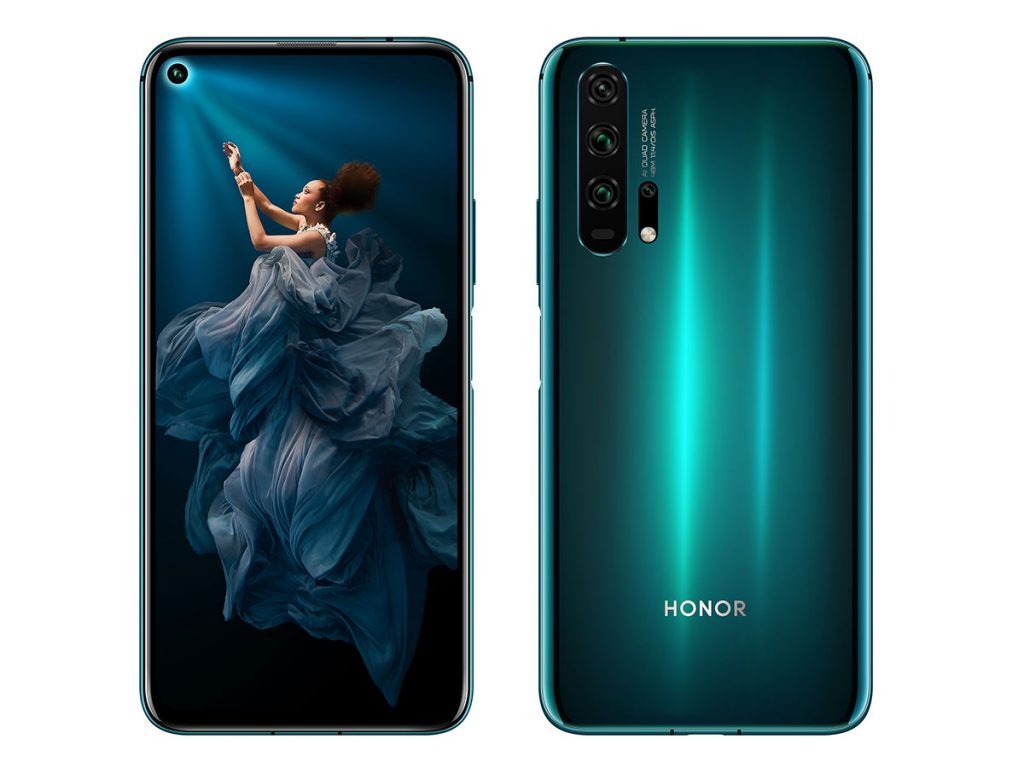Announced in May 2019, the Honor 20 Pro is the latest top-end device from Huawei’s budget-friendly sub-brand. The phone’s specifications are impressive, featuring a 6.26-inch LCD, a high-end Kirin 980 chipset, and 8Gb of RAM. Its quad-cam setup performed admirably in our rear camera tests—ahead of some of the more expensive flagship competitors. Its front camera features a high-resolution 32MP sensor coupled to an f/2 lens for stills, and 1080p video with gyroscope-enabled Electronic Stabilization (EIS). Read on to see if the Honor 20 Pro can also punch above its weight in our DXOMARK Selfie tests.
Key front camera specifications:
- 32 Mp sensor with 0.8µm pixels
- f/2.0-aperture lens
- 1080p/30fps video with gyro EIS
About DXOMARK Selfie tests: For scoring and analysis in our smartphone front camera reviews, DXOMARK engineers capture and evaluate over 1500 test images and more than 2 hours of video both in controlled lab environments and in natural indoor and outdoor scenes, using the camera’s default settings. This article is designed to highlight the most important results of our testing. For more information about the DXOMARK Selfie test protocol, click here.
Test summary


An overall score DXOMARK Selfie score of 85 points puts the Honor 20 Pro outside the top 10 in our database, instead seeing it nestling in between the OnePlus 7 Pro at 85 points and the iPhone XS Max at 82. Achieving the same score of 85 for both Photo and Video, the device is competent in both areas and gets many of the basics right.
Exposures are accurate and white balance is neutral in all lighting conditions; and although dynamic range is slightly limited compared to the top performers, highlights are often well-preserved in bright scenes. Bokeh shots display some depth estimation failures and more limited dynamic range, but the depth-of-field effect is pleasant, with good noise uniformity and repeatable results. In low light, noise is well-controlled and overall exposure is very respectable, but detail is low, with unnaturally-rendered skin tones and limited dynamic range. You can see in the low-light example (below right) that highlights and deep skin tones are clipped and fine detail is lost.
Focus and artifacts are the Honor 20 Pro’s main opportunities for improvement. At close (30cm) and medium (55cm) range, faces are in focus and details are fairly well-preserved in indoor and outdoor shots. Depth of field (focus) is narrow, however, so faces behind the first person in a group portrait are out of focus, and there’s a noticeable loss of detail in the background. Many artifacts are also visible, including color quantization, loss of sharpness in the corners, flare, facial distortion, and color shifts on faces. Accurate exposure using flash is another strength, however, and although some corner shading, loss of detail, and luminance noise are all visible, overall flash results remain pretty acceptable.
The Honor 20 Pro performs slightly better for moving images on the front camera. A video score of 85 points puts it in the top 10 of devices we’ve tested, and its strengths of accurate exposure, neutral white balance, and well-controlled noise ensure nice results in most conditions. Slight underexposure and a loss of detail is evident in challenging low-light conditions, and the jello effect is often visible when capturing moving subjects—but even so, the Honor 20 Pro does a pretty solid job for video.
Conclusion
Although the Honor 20 Pro doesn’t challenge the top performers overall, good exposure, white balance, and noise control ensure that it delivers pleasant selfies in most conditions. Add to that a good video performance, and the front camera is a competent, if not stellar, addition for those primarily interested in this device’s impressive specs and excellent main camera.
Photo
Pros
- Neutral white balance in all conditions
- Accurate exposure in all conditions
- Well-controlled noise in low light
- Accurate exposures using flash
Cons
- Limited dynamic range, especially indoors
- Narrow depth of field
- Unnatural skin tone rendering in low light
- Limited dynamic range in bokeh shots
Video
Pros
- Neutral white balance indoors and outdoors
- Accurate exposure indoors and outdoors
- Well-controlled noise indoors and outdoors
Cons
- Narrow depth of field
- Jello effect visible on moving subjects
- Slight underexposure in low light
- Loss of detail in low light








DXOMARK encourages its readers to share comments on the articles. To read or post comments, Disqus cookies are required. Change your Cookies Preferences and read more about our Comment Policy.